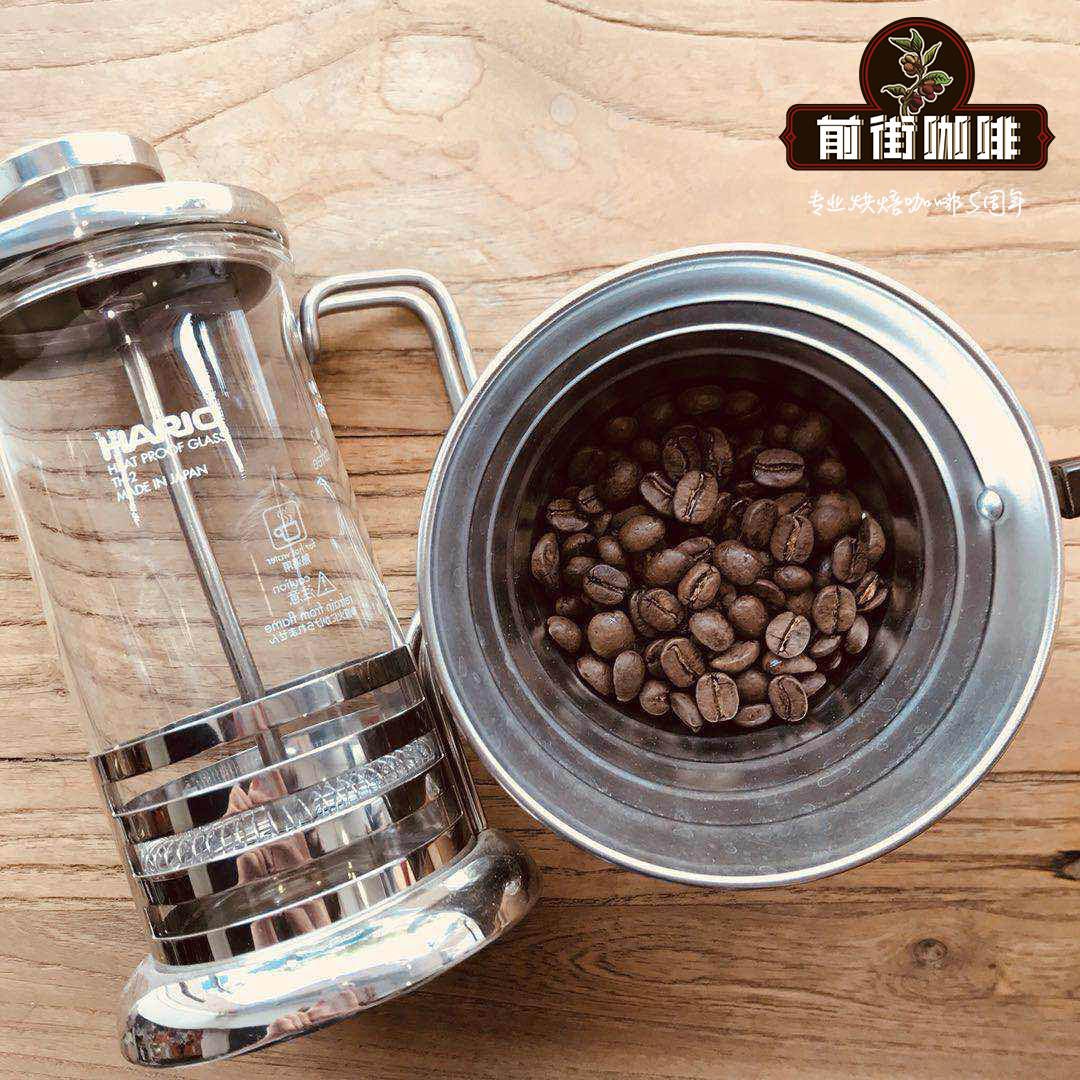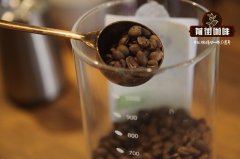How do you make Kenyan coffee? what kind of Kenyan coffee is Kenyan coffee? how much is Kenyan coffee?

Professional coffee knowledge exchange more coffee bean information please follow the coffee workshop (Wechat official account cafe_style)
[Kenyan Coffee Bean Haniyeh Manor French missionary bourbon sunburn]
Country: Kenya
Area: Sika (Thika)
Processing plant: Haniyeh Manor (ChaniaEstates)
Altitude: 1525 m
Variety: French missionary bourbon species
Treatment: sun treatment
0 1 | introduction to the origin of coffee beans in Kenya
Coffee is very different from county to county (county) in Kenya. Kenya is divided into 47 "counties" (county).
Coffee in different counties has distinct characteristics. Coffee trees in Kenya are mostly planted at 1400-2000 meters above sea level and harvested twice a year. The growth areas include Ruiri, Thika, Kirinyaga and Mt. Kenya West, Nyeri, Kiambu and Muranga. Mainly in the foothills of Mt.Kenya and Aberdare. For example, Embu coffee characteristics, balance, citrus fruits, chocolate, apples, acidity. Nyeri coffee features, white grape, juicy, grapefruit and small tomato flavor, fruity, as sweet as caramel.
Coffee in different counties has distinct characteristics. Coffee trees in Kenya are mostly planted at 1400-2000 meters above sea level and harvested twice a year. The growth areas include Ruiri, Thika, Kirinyaga and Mt. Kenya West, Nyeri, Kiambu and Muranga. Mainly in the foothills of Mt.Kenya and Aberdare. For example, Thika Kenya Sika Plateau coffee characteristics, balanced, citrus fruits, chocolates, apples, plum acid. Nyeri coffee features, white grape, juicy, grapefruit and small tomato flavor, fruity, as sweet as caramel.
Thika Sikakian cloth (Kiambu)
Kenya is located in the Kiambu coffee-growing region in the highlands east-central of the Great Rift Valley, with Sika as a secondary area. Located at the foot of the Aberdare Ridge, the soil is red volcanic soil, rich in organic matter. Due to the mild climate and moderate rainfall in the Kiambu region, coffee farmers can harvest twice a year-from May to July and from September to December.
KIAMBU (Giambo)
KIAMBU: this producing area in central Kenya has the highest coffee growing area in the region.
There are some large coffee farms in Kiambu, and small farmers work closely with their cooperative organizations, most of whom have their own processing plants, providing growers with a better choice than buying and selling coffee. Farmers process raw coffee beans in their factories and get a reasonable price at auction.
However, some coffee trees at high altitudes can get Dieback and stop growing. This producing area is named after the town of Nakuru. Coffee is grown here in the form of both manors and small farmers, but the yield is relatively small.
Altitude: 1850-2200 m
Harvest period: October to December (main production season), June to August (by-product season)
Varieties: SL-28, SL-34, Ruiru11, Batian
02 | Manor introduction
The Chania and Oreti estates are the only large and medium-sized private coffee plantations in Kenya, and the Harries family has managed the production of the coffee farms since 1904. The Haniyeh Manor (Chania Estate) and the Oreti Manor (Oreti Estate) are bordered by the Haniyeh River, with dams and reservoirs and nearly 200 acres of land, where forests are planted on the riverbank to protect birds and wildlife.
The landowner BoyceMarquis Allen Harries took over Estates and A.I.R in 2013. Family business (Harries&Son Ltd.).
Today, 40 employees work for Boyce, many of whom have served the Harries family for three generations, and employees have their own optional committees that meet monthly to discuss community safety, social and health issues. In addition to taking care of their own workers, the Harries family donated land to the Thika City Council and co-founded the Wabeni Institute of Technology, which teaches practical skills such as clothing, machinery and carpentry to help local residents make a living.
The Story of Harris: this manor has a history of more than 100 years
Haniyeh and Oreti Manor are the only large and medium-sized private coffee plantations in Kenya.
In 1904, Alan Charles Harris arrived in South Africa and came to Kenya. After a comprehensive survey of the country, Allen Charles Plain set up Karamaini Manor in what became Sika. It took him two days and a 30-mile journey from Nairobi in a donkey cart.
His third son, Aldred Ivan Rule Harris, remained in South Africa and helped support his father financially, eventually joining his coffee business in 1912.
In 1926 Ivan moved to the village of Haniya. This is a mixed farm on the Gania River, holding a small area of coffee.
Here Ivan sets out to discover what can be successfully farmed, trying to use hand cattle, sisal, and pineapple while slowly increasing the total area of coffee. He also bought an adjacent small farm to create real estate because it was today and in the early 1950s, based on his initials, he appointed his business, AIR Harris & Sons Ltd., in 1946, Ivan's son Peter Allen Harris completed his research in New Zealand.
He and his wife Ina (a New Zealander) joined his father in buying a piece of land more than five miles above Haniyeh's top-down ridge of Mount Aberdel. They named it Oretti and built a mixed farm of pineapple, coffee and macadamia nuts.
In the late 1950s, Peter inherited the operation of the two farms and his father died. The farm has pineapples, livestock and macadamia nuts, but coffee has become the focus of agricultural management. When Peter died suddenly in 1983, his eldest son and later his only surviving son, David Hugh Allen Harris (B.1947), was appointed to continue the family tradition.
David's nephew Alan Harris, Marquis of Boyce (born 1976), came to join him in 2004, living in Peter's hometown of Oreti. Boyce took over the operation of the two estates in 2013 after David retired, and AIR Harris & Sons Ltd., the family business of AIR Harris & Sons Ltd.
03 | Analysis of raw coffee beans in Kenya
French missionaries brought bourbon trees to Kenya around 1892-1893. This native bourbon tree species, known as renchMission Varietal (French missionary species), avoids scientific improvements in the planting process and retains the original flavor of bourbon.
Chania Estate's unique red volcanic soil, coupled with suitable coffee growth temperature and rainfall, coupled with excellent natural environment, create the unique flavor of French missionary bourbon species in Sika Haniya.
Bourbon grows Kenyan coffee beans
Tell me briefly what bourbon is. Bourbon coffee was originally grown on the island of Reunion, which was also known as le Bourbon before 1789. Bourbon, the second species caused by the Typica mutation, is the oldest coffee variety in existence, and the green fruit appears bright red when it is ripe.
The propagation route of bourbon species
In Africa, French missionaries known as Spiritan (from the Holy Spirit) played an important role in the spread of the bourbon species. The first church was founded in Reunion in 1841 and a branch was established in Zanzibar in 1859, while from Zanzibar, a branch was established in Bagamoyo (Bagamoyo, coast of Tanzania, then known as Tanganyika) and St. Augustine (Kikuyu, Kenya) in 1862, and a branch was established in Bura (Taita Hills, Kenya) in 1893. The establishment of each chapter was accompanied by the planting of coffee seeds from Reunion.
Seedlings cultivated by Bura in 1899 were brought to another French church in Santa Cruz (near Nairobi), introduced to the Kilimanjaro region of Tanzania in 1900, and distributed seeds to local residents who were willing to grow coffee. This is the origin of the so-called "missionary bourbon". Then the Kent species was introduced in 1920. Therefore, up to now, the coffee in Tanzania is mainly bourbon and Kent.
04 | introduction to coffee bean processing in Kenya
Sun exposure is less common on the market in Kenya, probably because of the excellent quality of Kenyan water washing, coupled with the sun loss rate and high labor costs, which can only be found in the special customized plans of some raw bean merchants. This bean is treated in the sun, which adds solidity and sweetness to the already rich and sour bourbon coffee in the process of exquisite sun exposure. With a limited number of sun batches, this coffee is completely dependent on the natural climate.
05 | roasting analysis of Kenyan coffee beans
The bean density is medium, the baking power is medium, and the heating rate of growing beans is faster during the baking process, so we should reduce the firepower at 150℃, 160℃ and 170℃ to prolong the Mena reaction time and prevent the beans from heating up too much. The first explosion starts at about 8 minutes and 15 seconds at 186 ℃. At the same time, the firepower is reduced and the throttle is opened to develop the flavor. 194 ℃ at 2 minutes.
Roaster Yangjia 600g semi-direct fire (baking capacity 300g)
The furnace temperature is preheated to 170℃ into the pot, the throttle is opened at 3j30s, fire is fired, the firepower is adjusted 140,the throttle is unchanged, the temperature recovery point is 1`28``, the firepower is reduced to 110and the throttle is opened to 4 at 140℃. 4`20` turns yellow, the smell of grass disappears, enters the dehydration stage, the firepower is reduced to 90, and the throttle is kept at 4. The firepower was reduced to 90, 70 and 50 again at 150℃, 160℃ and 170℃.
After dehydration, the bean surface appears wrinkles and black markings, and the taste of toast changes to coffee, which is a prelude to an explosion. Pay attention to the sound of an explosion. When the blast starts at 8`13``, the throttle is all open for 5, and the firepower is adjusted to 30 at the same time. After an explosion, the development time is 2 minutes, and put into the pot at 194 ℃.
Test results of coffee bean cup in Kenya
This coffee has a good flavor, but the defect rate is high. Please choose it carefully before and after baking. Dry aroma with sun fermentation, dried fruit and vanilla, sipping can drink caramel, vanilla, comprehensive fruit, solid juice, finish with berries, strong jackfruit, coffee flowers. The overall performance has the wild regional flavor of Africa, which is suitable for sipping and tasting slowly, and the complex aroma is difficult to give up.
06 | data of coffee beans in Kenya
Recommended cooking method: hand flushing
Degree of grinding: 3.5 (Fuji R440, Japan)
Water temperature: 90 ~ 91 °C
V60 filter cup, 15g powder, grinding 3.5
The ratio of water to powder is close to 1:15
Steaming in 30 grams of water for 30 seconds
Water injection, it is recommended that the front section of small water, immersion extraction, when the water level is falling, the water flow will follow the spiral ribs, the water flow will do a concentrated action, and this action is the same as the state when twisting towels, the coffee particles in the water will be squeezed at one time, and in order to maximize the extrusion function, the water level will completely soak the powder layer height in the control of the water supply.
The second water injection also starts from the middle, with a small water column injected into the bottom of the powder layer. In order to concentrate the penetrating force of the water column, the range of movement around the water column should be small, about the size of an one-dollar coin, and then wound out. At the beginning of the second water supply, we should pay attention to the amount of water, and try not to exceed the height of the powder layer, that is, when the water column is wound close to the filter paper, the water supply can be stopped.
Section: water injection to 120ml cut off water, slow water injection to 225ml, that is, 30-120-75, the total extraction time is about 2 minutes.
Other suggestions for trickling extraction:
Normal pressure, recommended grinding degree of 3.5-4 / water temperature 90 °C
Philharmonic pressure, recommended 2.5 grinding degree, water temperature 90 °C
Hand punch: 3.5 degree of grinding, water temperature 91 °C
1. Weigh 20 grams of beans, the size of ground sugar, the ratio of powder to water is 1:15.
2. Preheat the kettle with water, then pour out; pour the coffee powder into the kettle.
3. Pour the hot water at 89 degrees to start the clock. Stir gently after pouring water to make sure all the coffee powder can be soaked.
4. After four minutes, slowly press down the pressure bar and pour it out.
Kenyan coffee bean brand recommendation
The Kenyan coffee beans baked on Qianjie Coffee are fully guaranteed in terms of brand and quality. More importantly, the performance-to-price ratio is extremely high, a box of 227 grams, the price is only 95 yuan. According to the calculation of 15 grams of powder per cup of coffee, a bag of coffee can make 15 cups of coffee, which costs only about 6 yuan per cup, which is recommended by conscience compared to the price sold in cafes for dozens of yuan a cup.
Important Notice :
前街咖啡 FrontStreet Coffee has moved to new addredd:
FrontStreet Coffee Address: 315,Donghua East Road,GuangZhou
Tel:020 38364473
- Prev

The characteristics of Kenyan coffee introduce how Kenyan coffee tastes how much is a cup of Kenyan coffee
For more information on coffee beans, please follow the coffee workshop (Wechat official account cafe_style) Coffee beans in Kenya in 1878, the British brought coffee to Africa and a coffee plantation was established in Kenya (Kenya) in the 19th century, when Ethiopian coffee drinks were imported to Kenya through South Yemen. But it was not until the beginning of the 20th century that the bourbon coffee tree was saint.
- Next

Is Kenyan aa coffee expensive? Introduction to coffee processing and distribution in Kenya
Professional coffee knowledge exchange more coffee bean information please follow the coffee workshop (Wechat official account cafe_style) Kenya coffee beans have many followers in the boutique coffee industry, Kenya AA coffee beans are very popular. Kenyan coffee beans, known as the connoisseur's Cup (ConnoisseursCup), have a rich aroma, bright and vibrant acid.
Related
- Detailed explanation of Jadeite planting Land in Panamanian Jadeite Manor introduction to the grading system of Jadeite competitive bidding, Red bid, Green bid and Rose Summer
- Story of Coffee planting in Brenka region of Costa Rica Stonehenge Manor anaerobic heavy honey treatment of flavor mouth
- What's on the barrel of Blue Mountain Coffee beans?
- Can American coffee also pull flowers? How to use hot American style to pull out a good-looking pattern?
- Can you make a cold extract with coffee beans? What is the right proportion for cold-extracted coffee formula?
- Indonesian PWN Gold Mandrine Coffee Origin Features Flavor How to Chong? Mandolin coffee is American.
- A brief introduction to the flavor characteristics of Brazilian yellow bourbon coffee beans
- What is the effect of different water quality on the flavor of cold-extracted coffee? What kind of water is best for brewing coffee?
- Why do you think of Rose Summer whenever you mention Panamanian coffee?
- Introduction to the characteristics of authentic blue mountain coffee bean producing areas? What is the CIB Coffee Authority in Jamaica?

